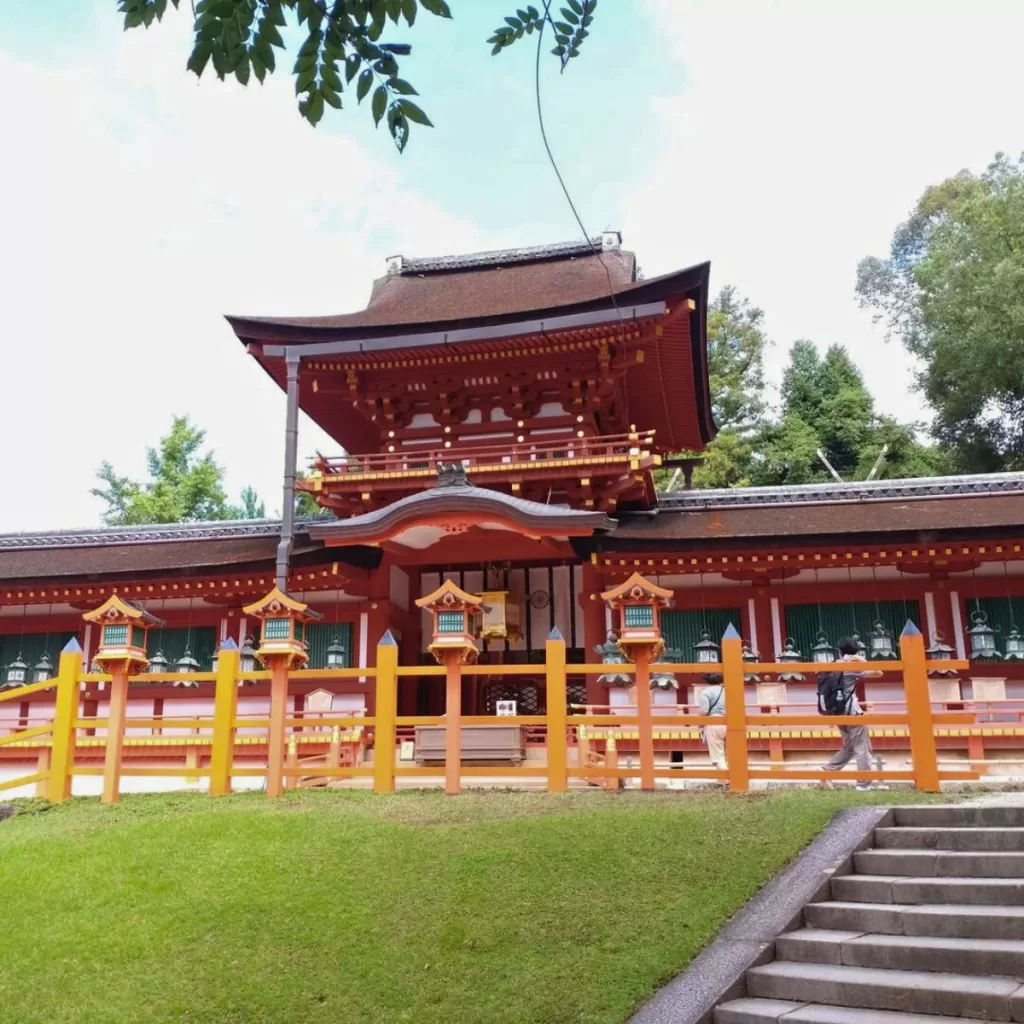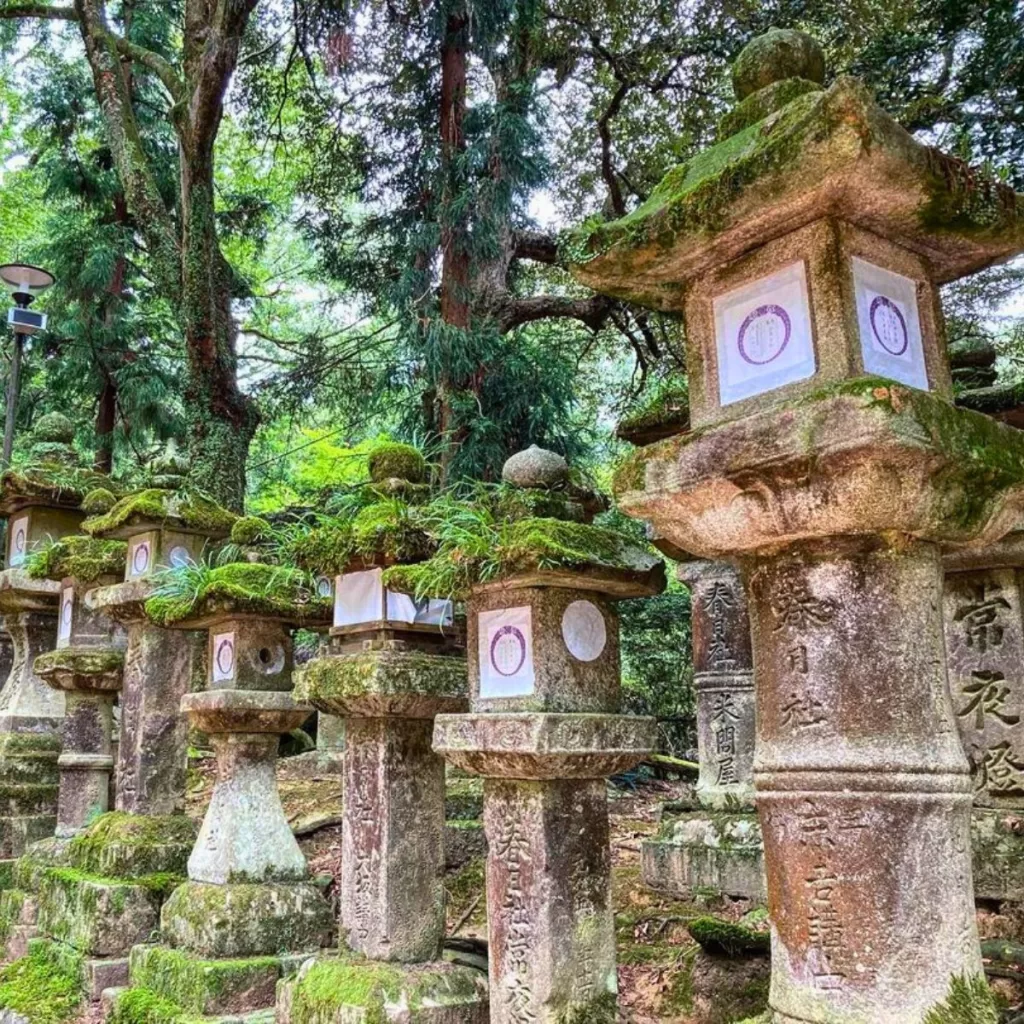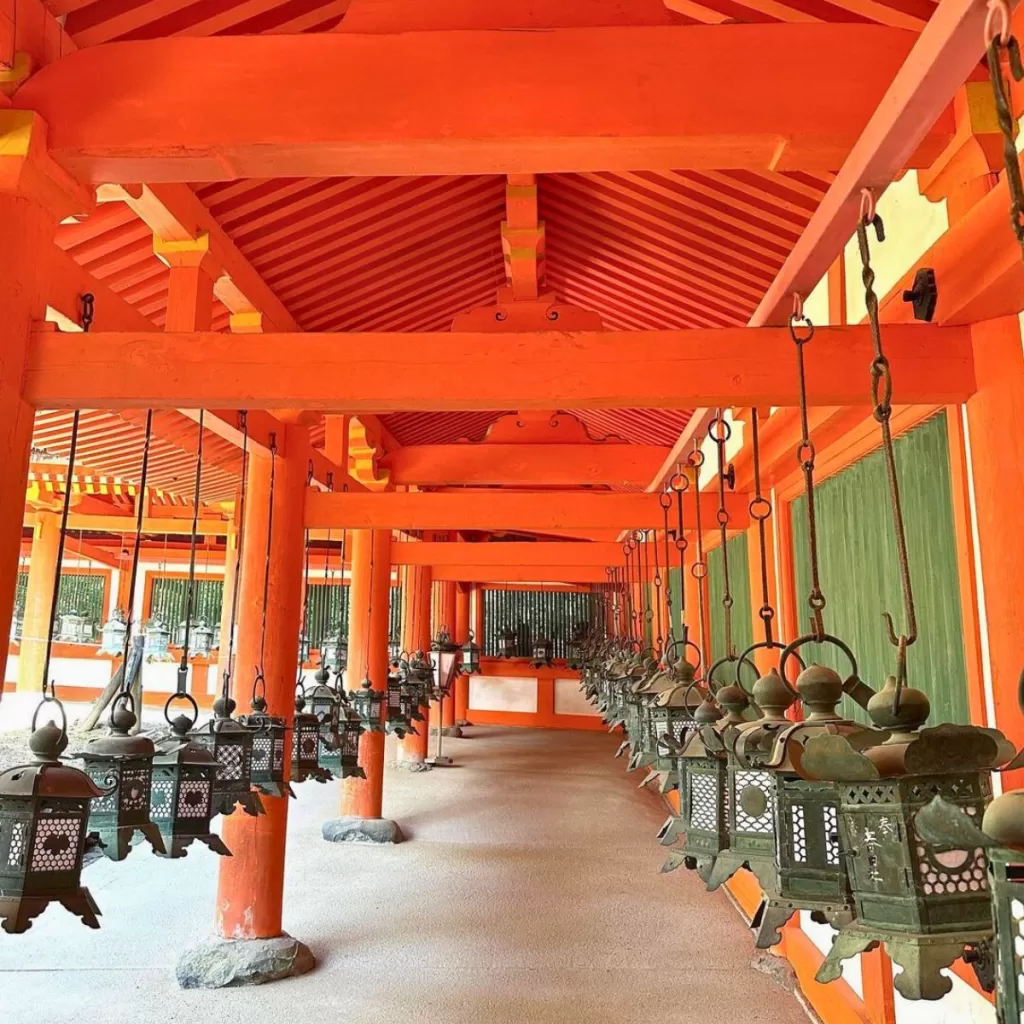Kasuga Grand Shrine: An Enchanting Shinto Sanctuary in Nara
Overview of Kasuga Taisha Shrine
The Kasuga Taisha Shrine, also known as the Kasuga Grand Shrine, is a famous Shinto shrine in Nara, Japan. Established in 768 by the Fujiwara family, this ancient shrine is well-renowned for its plethora of lanterns and its association with deer – creatures considered sacred within the Shinto religion.

Kasuga Taisha holds a unique position in Japan’s cultural history, being closely associated with the foundation of the Heian period. Moreover, it is cherished as one of the best examples of ‘Kasuga style’ shrine architecture, characterized by a distinctive architectural feature: an extended frontage over the front of the respective buildings.
Historical Significance and UNESCO Recognition
The Kasuga Taisha Shrine is regarded as an important cultural property of Japan and has been designated as a UNESCO World Heritage Site as part of the “Historic Monuments of Ancient Nara” ensemble. The shrine was established to enshrine deities associated with four influential family clans from the Nara period.
One remarkable fact about Kasuga Taisha is its tradition of ‘shikinen sengu,’ where all shrine buildings were completely dismantled and replaced every 20 years according to ancient Shinto beliefs for renewal. However, after centuries have passed, this practice now mostly takes place at Ise Shrine due to socio-economic changes.

Notable Features on and Around Kasuga Taisha Shrine Complex
Unquestionably one of Nara’s most celebrated shrines, Kasuga Taisha breeds awe-inspiring aspects that draw tourists from around the world. One iconic element includes numerous stone and bronze lanterns decorating the shrine grounds and pathways leading to it. Interestingly, these lanterns are only lit twice annually during two Lantern Festivals.
Another scenic part within the shrine complex is Kasuga Primeval Forest, extending over a mountain behind Kasuga Taisha; this forest is protected as a sanctuary due to its unspoiled vegetation dating back several centuries.
Near Kasuga Taisha Shrine, visitors can witness hundreds of free-roaming deer at Nara Park – another renowned tourist attraction underlining another link between nature and Shintoism. Various other prestigious temples, like Todaiji Temple, coexist harmoniously around it.

Fees, Access, and Attractions near Kasuga Taisha
With just an entrance fee of 500 yen for adults, one can get access to various paid areas within the shrine which includes Main Shrine (Kasuga Taisha Honden), the innermost precinct enshrining deities; Wakamiya Shrine, a subsidiary shrine within the precinct; Botanical Garden (Man’yo Botanical Garden) showcasing about 250 kinds of plants mentioned in Man’yoshu (oldest Japanese waka poetry collection); and Inner Area showing temporary exhibitions.
Navigating your way to this famous shrine involves either catching a bus from JR or Kintetsu Nara Stations until reaching the ‘Kasuga Taisha Honden Bus Stop or walking along roads brimmed with traditional shops and eateries leading to it.
Additionally, tourists can explore locations padding along Kunimi-ga-oka Hill, which provides captivating views overlooking the entire city, or immerse themselves in history at nearby museums such as Nara National Museum or adjacent museum dedicated solely to understanding history and culture associated with Kasuga Taisha itself – The ‘Kasuga Taisha Museum.’
Events and Celebrations At Kasuga Grand Shrine
While each visit guarantees unique encounters with nature and history throughout different seasons, some may want to condense their trip to coincide with vibrant festivals hosted here throughout the year, endowing visitors with an insight into Japanese religious customs. One pivotal celebration held here against a backdrop lined up with cherry blossoms in Spring is ‘Kasugano Engei Taisai.’ Similarly, the Autumn Festival, known as ‘Chugen Mantoro,’ is a venerable event where about three thousand lanterns illuminate the path to Kasuga-Taisha.
A visit to this world-renowned site promises delights beyond serenity: From capturing iconic photos under cascades of hanging bronze lanterns, seeking blessings at surrounding auxiliary shrines, admiring enchanting Wisteria gardens signifying emblem of the Fujiwara clan, or exploring wondrous exhibits within the museum completing your cultural expedition around Popular Tourist Destination – The Incredible “Kasuga Grand Shrine.”
FAQs
What is Kasuga Grand Shrine and where is it located?
Kasuga Grand Shrine, also known as Kasuga Taisha Shrine, is a Shinto shrine located in Nara, Nara Prefecture. It is one of the most famous shrines in Nara and is dedicated to the deities enshrined at Kasuga Taisha.
How can I get to Kasuga Grand Shrine?
To get to Kasuga Grand Shrine, you can take a train to JR Nara Station and then either walk or take a bus to the shrine. The shrine is located near the Kasuga Taisha Honden bus stop.
What are some attractions near Kasuga Grand Shrine?
Near the Kasuga Grand Shrine, you can find attractions such as the Kasuga Taisha Museum, Manyo Botanical Garden, and the path leading to the shrine. Additionally, the shrine is located in Nara, which offers many other cultural and historical attractions for visitors to explore.
How often is Kasuga Grand Shrine rebuilt?
Kasuga Grand Shrine is rebuilt every 20 years. This tradition, known as Shikinen Sengu, involves the reconstruction of the main building and the transfer of the deities to a newly built structure. It is a significant event in the shrine’s history and is carried out to maintain the spiritual power of the shrine.
What is the significance of the stone lanterns at Kasuga Grand Shrine?
The stone lanterns at Kasuga Grand Shrine hold great significance. They symbolize the connection between the earthly and spiritual realms and are believed to guide the spirits of the deities enshrined at Kasuga Taisha. These lanterns are lit during special occasions and festivals, creating a mesmerizing atmosphere.
Can you tell me more about the Kasuga-style architecture at Kasuga Grand Shrine?
Kasuga Grand Shrine is known for its unique Kasuga-style architecture. This architectural style features sloping roofs and vivid vermilion color, which are characteristic of Shinto shrines. The front of the building extends over an open area, creating an impressive and grand appearance.
What is the significance of the wisteria flower at Kasuga Grand Shrine?
The wisteria flower holds cultural and symbolic importance at Kasuga Grand Shrine. It is the emblem of the Fujiwara clan, which has been closely associated with the shrine for centuries. The wisteria’s blooming season is celebrated with festivals and adds to the natural beauty of the shrine’s surroundings.